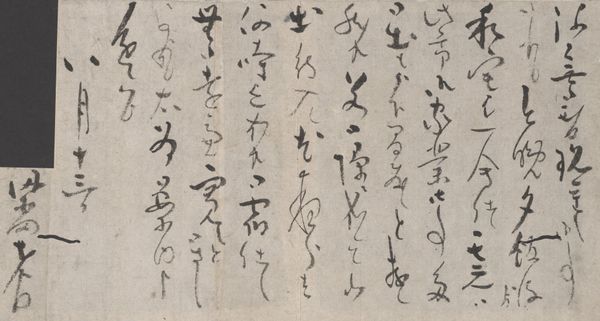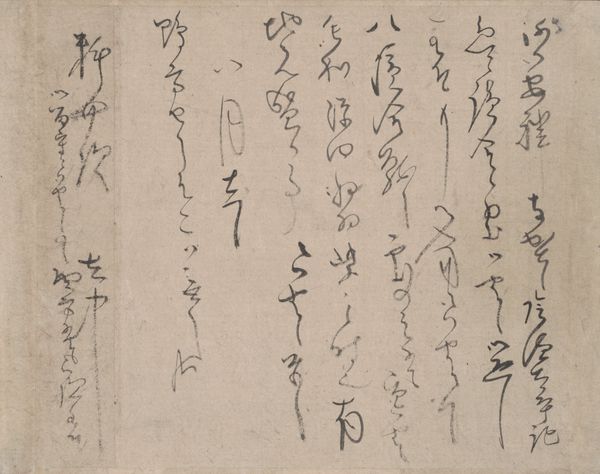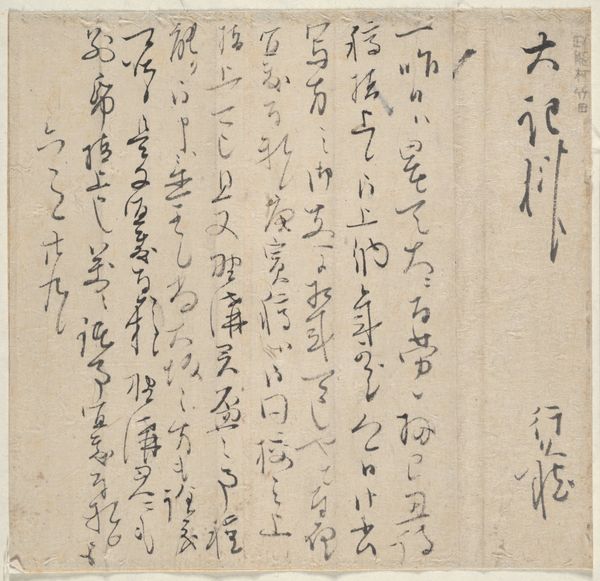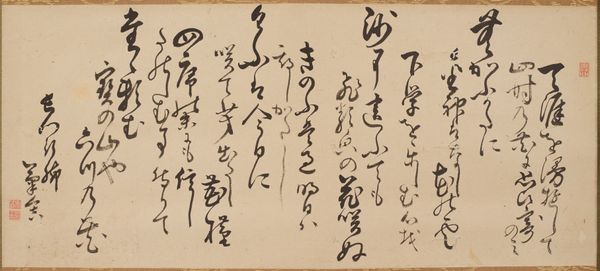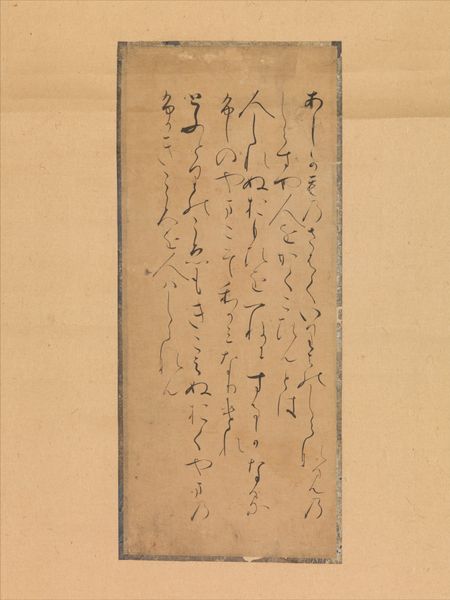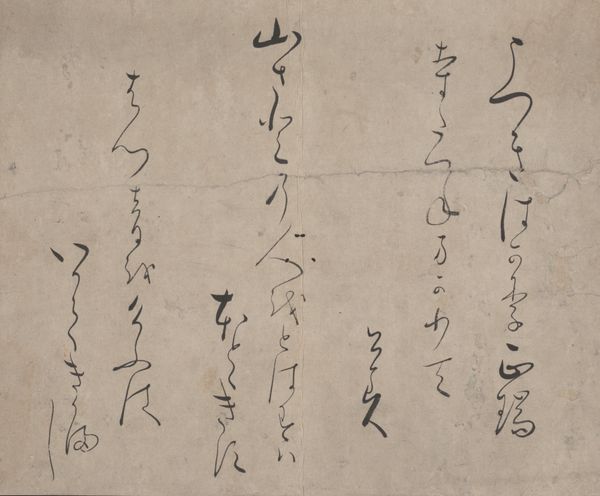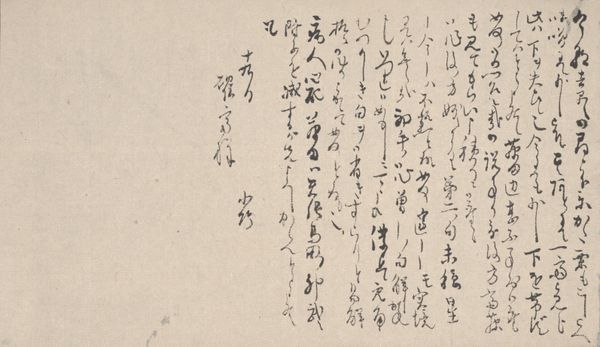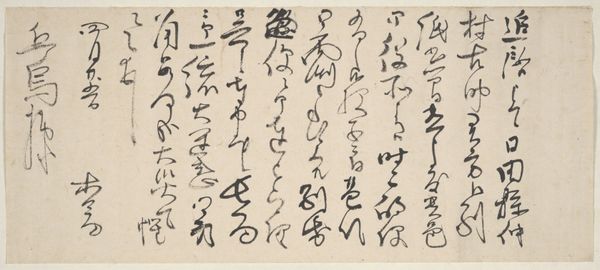
Three Poems from the Later Collection of Japanese Poems (Gosen wakashū) 1167 - 1185
0:00
0:00
drawing, textile, paper, ink
#
drawing
#
medieval
#
asian-art
#
textile
#
paper
#
ink
#
calligraphy
Dimensions: Image: 6 7/8 × 5 11/16 in. (17.4 × 14.5 cm) Overall with mounting: 51 5/16 × 14 1/2 in. (130.3 × 36.8 cm) Overall with knobs: 51 5/16 × 16 1/4 in. (130.3 × 41.2 cm)
Copyright: Public Domain
Curator: These graceful lines practically dance across the paper. Editor: Indeed! This piece, titled "Three Poems from the Later Collection of Japanese Poems," also known as the "Gosen wakashū," dates from the late 12th century. It’s currently held here at The Met. The calligraphy is attributed to Monk Saigyō. Curator: I get a sense of ephemeral beauty looking at it. It’s like trying to catch a falling blossom—the meaning keeps slipping through your fingers even as you try to grasp it. Editor: I’m drawn to the cultural significance of this form. Calligraphy in this period wasn't merely writing, it was an art form deeply intertwined with spiritual practice and social status. The choice of poems from the "Gosen wakashū," suggests a conversation with established poetic traditions while hinting at personal reflections on nature, impermanence, and the monk's own journey. Curator: Absolutely. I love how the ink bleeds just so. It gives everything a soft, hazy edge like a memory fading at the edges. Does the paper type suggest anything? Editor: The texture of the paper and the way the ink interacts with it certainly contributes to the overall aesthetic. This period favoured handmade paper. Examining the specific type of paper used, and the ink itself, might reveal connections to specific workshops or patronage networks of the time. These materials held symbolic value of their own. It suggests intentionality and deliberate selection in constructing layers of meaning and artistic expression. Curator: So, in a way, it’s like Monk Saigyō used every part of this to tell the story and deliver meaning through the feel and presentation? Editor: Precisely. The act of writing itself becomes performative, embedding the monk’s spiritual discipline into the artwork. This intersects with his status as a wandering poet-monk, critiquing social norms and embodying a sense of detachment. His choice to leave court life, choosing spiritual wandering, further informs this particular piece. Curator: Makes you wonder what it must have been like, to exist so poetically, don't you think? Thanks for opening my eyes further to these aspects of this art! Editor: A necessary and meaningful question, if we consider art and activism to offer mutual potential to unveil something greater. Thank you!
Comments
No comments
Be the first to comment and join the conversation on the ultimate creative platform.
